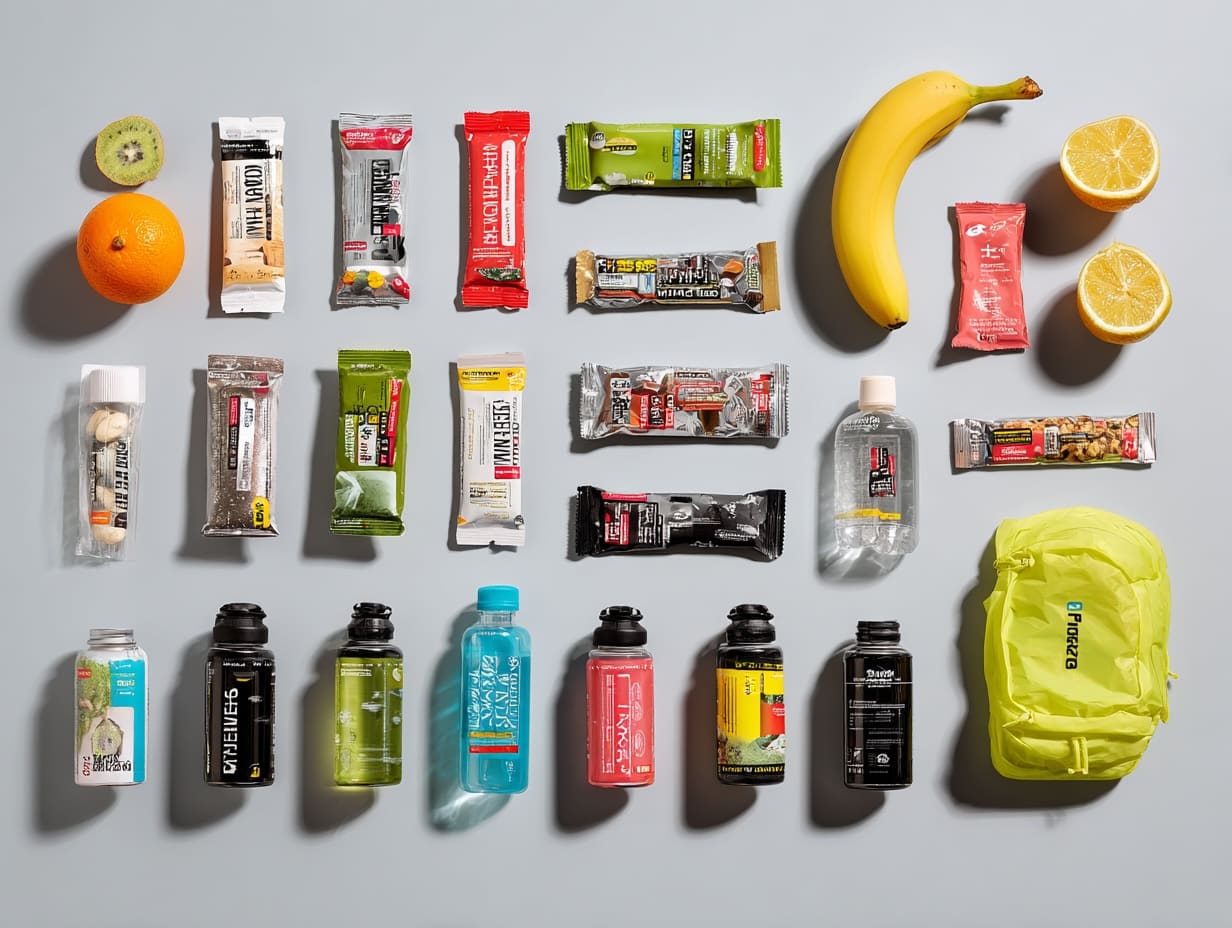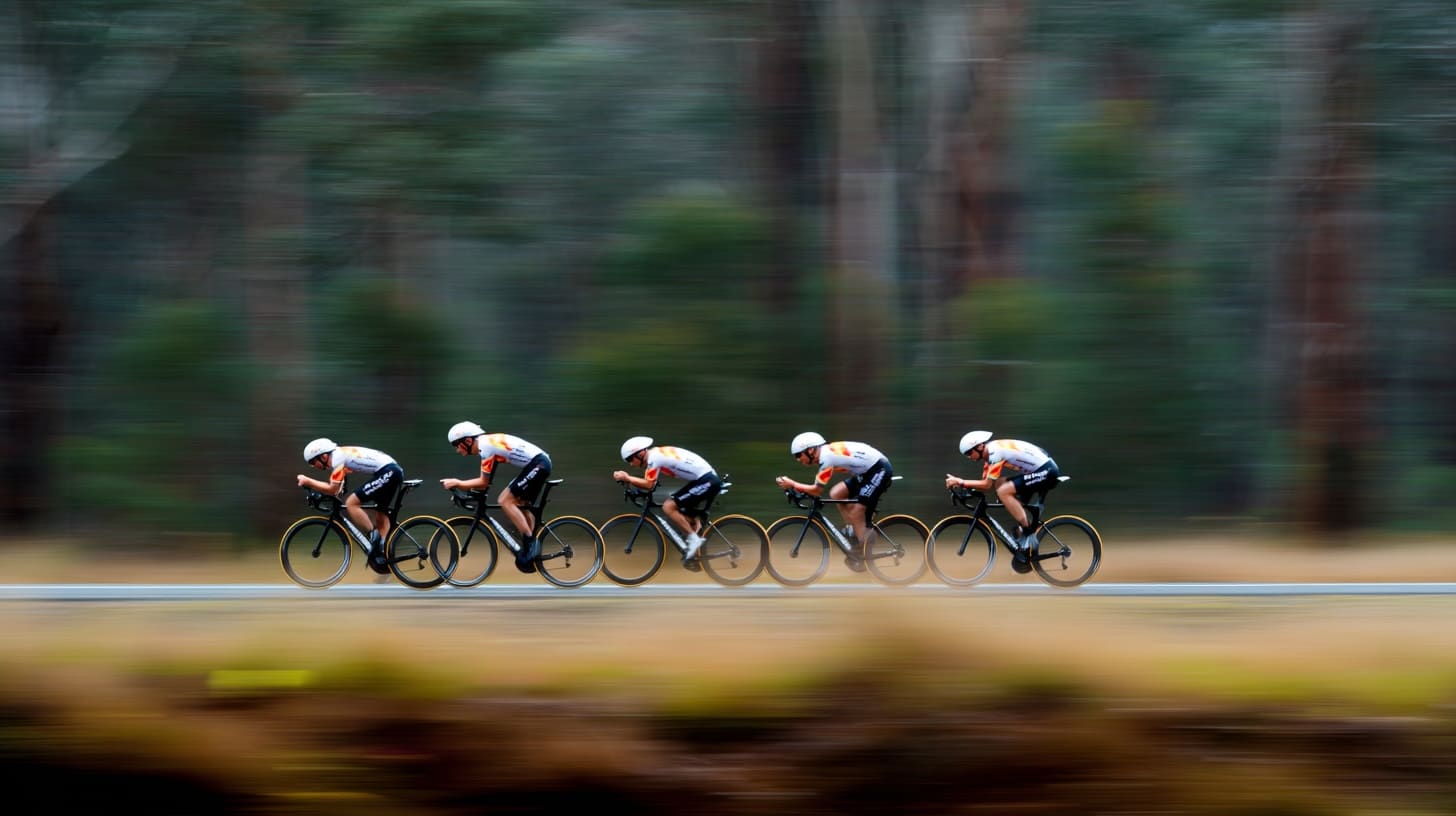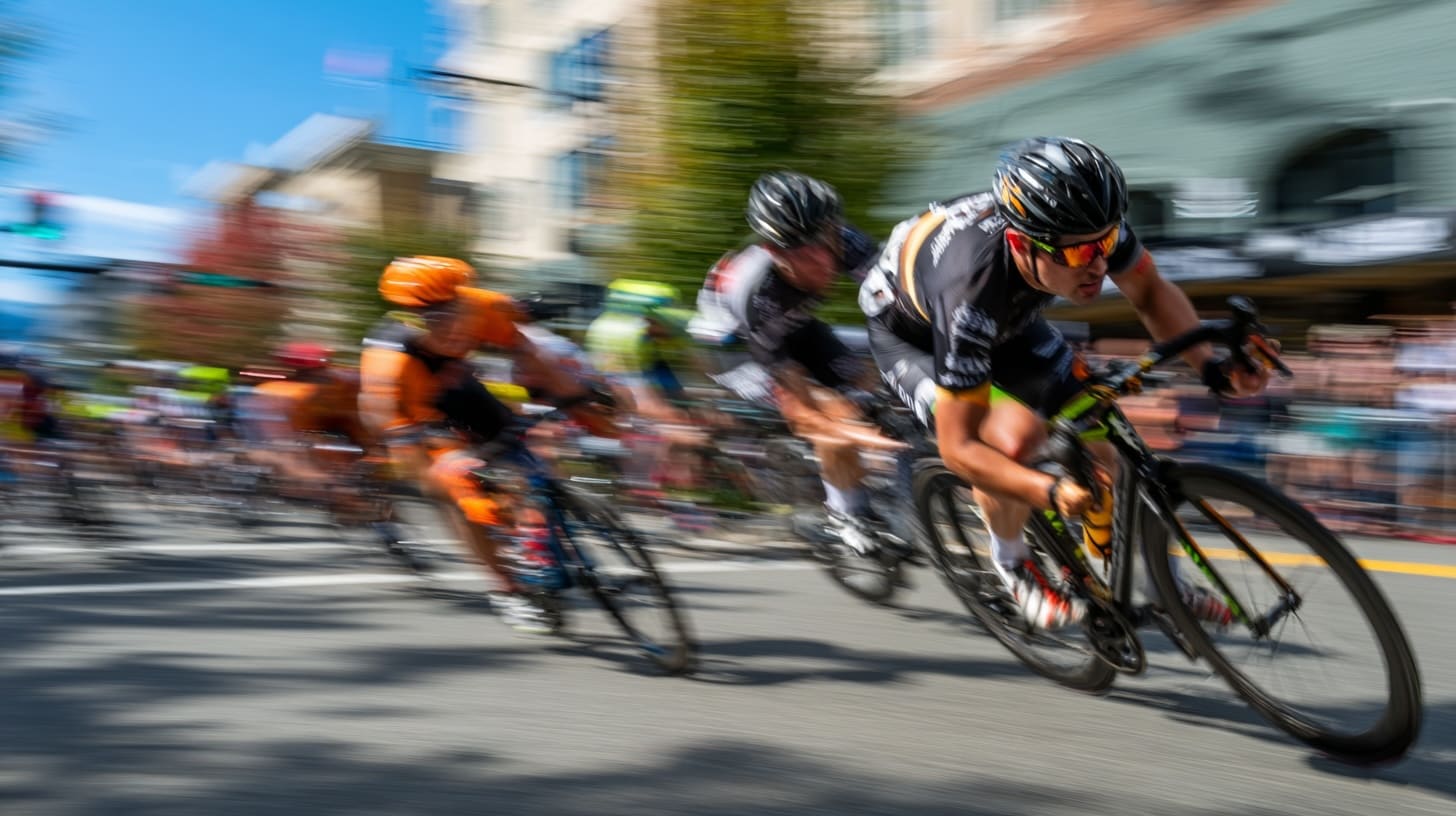From Commuter to Competitor: Your 12-Week Racing Preparation Guide
Transform from recreational rider to race-ready competitor with this comprehensive 12-week training plan, complete with nutrition strategies, mental preparation techniques, and race-day tactics.

The leap from casual commuting or weekend rides to standing at a race start line might seem daunting, but with the right preparation, it's entirely achievable. This comprehensive 12-week program will systematically build your fitness, sharpen your skills, and prepare you mentally for the unique demands of competitive cycling. Whether you're targeting a local criterium, road race, or gran fondo, this structured approach will transform you from a recreational cyclist into a confident competitor.
Understanding the Journey Ahead
Making the transition to racing requires more than just riding harder or longer. It demands a systematic approach that develops specific energy systems, builds race-specific skills, and prepares you mentally for the intensity of competition. The beauty of this 12-week structured training approach lies in its progressive nature – each phase builds upon the previous one, ensuring you arrive at race day peaked and confident.
Before diving into the training, it's crucial to understand what separates racing from recreational riding. Racing demands sustained efforts at uncomfortable intensities, the ability to respond to sudden accelerations, tactical awareness in group situations, and mental resilience when your body wants to quit. This program addresses all these elements systematically.
Phase 1: Base Building (Weeks 1-4)

The Foundation Phase
The first four weeks focus on building your aerobic engine – the foundation upon which all racing fitness is built. This phase might feel easy compared to what's coming, but resist the temptation to push harder. These weeks are about adaptation, not heroics.
Week 1-2: Establishing Routine
Monday: Rest day or 30-minute active recovery spin Tuesday: 60-minute endurance ride with 3 x 5-minute tempo efforts Wednesday: 45-minute recovery ride Thursday: 60-minute endurance ride with hill repeats (5 x 2 minutes) Friday: Rest day Saturday: 2-hour endurance ride at steady pace Sunday: 90-minute endurance ride or group ride
During these initial weeks, focus on establishing consistent training habits. Set regular wake times, prepare your gear the night before, and begin experimenting with on-bike nutrition. Your body is adapting to the increased training load, so prioritize sleep and recovery.
Week 3-4: Building Volume
Monday: Rest day or 30-minute active recovery Tuesday: 75-minute ride with 4 x 8-minute threshold intervals Wednesday: 60-minute recovery ride Thursday: 75-minute ride with 6 x 3-minute VO2 efforts Friday: Rest day Saturday: 2.5-3 hour endurance ride Sunday: 90-minute endurance ride with tempo sections
By weeks 3-4, you should feel your fitness beginning to build. Your heart rate at a given pace should be slightly lower, and efforts that felt challenging in week 1 should feel more manageable. This is adaptation in action.
Nutrition During Base Phase

During base building, focus on establishing solid nutritional habits:
- Eat within 30 minutes post-ride (protein + carbohydrates)
- Consume 40-60g of carbohydrates per hour on rides over 90 minutes
- Hydrate consistently throughout the day
- Begin experimenting with different energy products to find what works
Phase 2: Build Phase (Weeks 5-8)
Intensifying the Effort
The build phase introduces more intensity through threshold and VO2 max intervals, simulating the demands of racing. This is where the real transformation happens – your body learns to sustain higher power outputs and recover from repeated efforts.
Week 5-6: Introduction to Intensity

Monday: Rest or 45-minute active recovery Tuesday: 90-minute ride with 3 x 10-minute threshold intervals (5-minute recovery) Wednesday: 60-minute endurance ride Thursday: 75-minute ride with 5 x 3-minute VO2 max efforts (3-minute recovery) Friday: Rest or easy 30-minute spin Saturday: 3-hour group ride with competitive sections Sunday: 90-minute recovery ride
The jump in intensity during weeks 5-6 will challenge you physically and mentally. Threshold intervals should feel sustainably hard – you're riding at an effort you could theoretically hold for an hour. VO2 max efforts are much harder – think "I can barely hold a conversation" intensity.
Week 7-8: Peak Build
Monday: Rest day Tuesday: 90-minute ride with 3 x 15-minute threshold intervals Wednesday: 75-minute endurance ride with cadence drills Thursday: 90-minute ride with 6 x 3-minute VO2 max hills Friday: Rest or 45-minute recovery Saturday: 3.5-hour endurance ride with race simulation efforts Sunday: 2-hour mixed pace ride
These are your highest volume weeks. You're now capable of sustaining efforts that would have seemed impossible eight weeks ago. Group rides become crucial during this phase – they teach you to respond to surges, position yourself effectively, and read race dynamics.
Mental Skills Development
The build phase is ideal for developing mental preparation techniques:
Visualization Practice: Spend 10 minutes each evening visualizing successful race scenarios. See yourself responding to attacks, maintaining position in the bunch, and finishing strong.
Goal Setting Framework:
- Process Goals: "I will complete all threshold intervals this week"
- Performance Goals: "I will maintain 250 watts for 20 minutes"
- Outcome Goals: "I will finish in the top half of my first race"
Developing Race Mantras: Create short, powerful phrases to use when racing gets tough:
- "Smooth is fast"
- "I belong here"
- "One pedal stroke at a time"
Phase 3: Peak and Taper (Weeks 9-12)
Sharpening the Blade
The final phase shifts focus from building fitness to sharpening it for race day. Volume decreases while intensity remains high, ensuring you arrive at race day fresh but fast.
Week 9-10: Race Simulation
Monday: Rest day Tuesday: 75-minute ride with 5 x 5-minute race pace efforts Wednesday: 60-minute recovery ride Thursday: 90-minute ride with 8 x 1-minute all-out sprints Friday: Rest day Saturday: 2.5-hour ride with 45-minute race simulation Sunday: 90-minute recovery or easy group ride
These weeks include race simulation efforts – sustained periods at race intensity with surges and sprints mixed in. Practice your race-day nutrition strategy during Saturday's longer efforts.
Week 11: Final Preparations
Monday: Rest day Tuesday: 60-minute ride with 3 x 8-minute threshold Wednesday: 45-minute recovery ride Thursday: 60-minute ride with 6 x 30-second sprints Friday: Rest day Saturday: 90-minute ride with 20-minute race pace effort Sunday: 60-minute easy ride
Week 11 maintains intensity but significantly reduces volume. You should feel fresh and eager to race. This is the week to finalize all race logistics – register, plan your travel, prepare your equipment.
Week 12: Race Week Taper
Monday: Rest day Tuesday: 45-minute ride with 3 x 3-minute openers Wednesday: 30-minute easy spin Thursday: 45-minute ride with 5 x 1-minute efforts at race pace Friday: Rest or 20-minute easy spin Saturday: 30-minute pre-race ride with 3 x 30-second openers Sunday: RACE DAY
The taper week is about maintaining feel without inducing fatigue. Short, sharp efforts keep your systems primed while allowing full recovery. Trust the taper – the urge to do more is strong, but rest is your final performance enhancer.
Nutrition Strategy Deep Dive
Daily Training Nutrition
Your nutrition plan should evolve throughout the 12 weeks:
Base Phase Daily Targets:
- Carbohydrates: 5-7g per kg body weight
- Protein: 1.4-1.7g per kg body weight
- Fat: 1-1.2g per kg body weight
- Hydration: 35ml per kg body weight + training losses
Build Phase Adjustments:
- Increase carbohydrates to 7-10g per kg on high-intensity days
- Time carbohydrate intake around training sessions
- Add branched-chain amino acids for recovery
Peak Phase Fine-Tuning:
- Practice exact race-day nutrition during training
- Test different energy products at race intensity
- Perfect your hydration strategy
Race Week Nutrition Protocol
The final week requires precise nutrition:
Monday-Wednesday: Normal balanced diet with slight carbohydrate increase Thursday-Friday: Begin carbohydrate loading (8-10g per kg body weight) Saturday: Light, easily digestible foods; avoid fiber and fat Race Morning:
- 3-4 hours before: Substantial breakfast (oatmeal, banana, toast with honey)
- 2 hours before: Light snack (banana, energy bar)
- 1 hour before: Sports drink sipping begins
- 15 minutes before: Final gel or half banana
On-Bike Fueling Strategy
For races under 1 hour: Focus on hydration; no additional carbohydrates needed For races 1-2 hours: 30-60g carbohydrates per hour For races over 2 hours: 60-90g carbohydrates per hour
Mix your carbohydrate sources – gels, bars, drink mix, and real food. Practice consuming fuel at race intensity during training to avoid gastrointestinal issues.
Leveraging AI for Training Optimization
The Digital Training Revolution
Modern technology has revolutionized cycling training, and artificial intelligence is the latest frontier. AI-powered platforms can analyze your training data, adapt your workouts in real-time, and provide insights that would take a human coach hours to uncover. You can unlock a lot of training with AI.
AI Training Applications:
Adaptive Training Plans: Platforms like TrainerRoad and Wahoo SYSTM use machine learning to adjust your training based on performance, fatigue, and life stress. Miss a workout? AI recalculates your plan to keep you on track.
Performance Prediction: AI algorithms can predict your race readiness by analyzing power data trends, heart rate variability, and training load. Tools like WKO5 and Golden Cheetah provide deep insights into your fitness progression.
Virtual Coaching: AI coaches like PKRS.AI and JOIN analyze your historical data to create personalized training zones, identify weaknesses, and suggest targeted workouts. They're like having a coach who never sleeps and constantly monitors your progress.
Recovery Optimization: Platforms like Whoop and Oura use AI to analyze sleep patterns, heart rate variability, and other biomarkers to recommend optimal training loads and recovery strategies.
Implementing AI in Your Training
Week 1-4: Use AI platforms to establish baseline fitness and optimal training zones Week 5-8: Let AI adjust interval intensities based on your adaptation rate Week 9-12: Utilize AI race predictors to fine-tune your pacing strategy
Best Practices for AI Training:
- Consistently upload all training data for accurate analysis
- Don't blindly follow AI recommendations – consider how you feel
- Use AI insights to identify patterns you might miss
- Combine AI guidance with human intuition and experience
Mental Preparation Masterclass
Building Mental Resilience

Psychological preparation is often the difference between finishing and winning. The mental skills you develop during training directly translate to race performance.
Progressive Mental Training:
Weeks 1-4: Foundation
- Daily 5-minute meditation or breathing exercises
- Post-ride reflection journaling
- Positive self-talk development
Weeks 5-8: Application
- Visualization during hard intervals
- Practicing mantras during threshold efforts
- Managing discomfort without negative self-talk
Weeks 9-12: Refinement
- Full race visualization sessions
- Pressure training (intervals with consequences)
- Developing pre-race routines
Race Psychology Techniques
The Performance Mindset:
- View nervousness as excitement and readiness
- Focus on process, not outcome
- Embrace discomfort as a sign of effort, not failure
In-Race Mental Strategies:
- Break the race into segments
- Focus on controllables (effort, position, nutrition)
- Use competitors as motivation, not intimidation
- Maintain positive internal dialogue
Managing Race Anxiety:
- Arrive early to familiarize yourself with surroundings
- Warm up thoroughly to channel nervous energy
- Use box breathing (4-4-4-4 count) to calm nerves
- Remember: everyone else is nervous too
Race-Day Execution
The 24 Hours Before
Proper race preparation begins the day before:
Day Before Checklist:
- Complete bike maintenance and safety check
- Prepare all gear and lay out clothing
- Plan and prepare meals
- Review race course and tactics
- Early bedtime (aim for 8+ hours sleep)
Race Morning Routine:
- Wake 3-4 hours before start
- Eat practiced breakfast
- Gradual hydration
- Dynamic warm-up routine
- Mental preparation/visualization
Equipment Essentials
On-Bike Setup:
- Two water bottles (one plain water, one with electrolytes)
- Energy gels/bars in easily accessible pockets
- Mini pump or CO2 cartridges
- Spare tube and tire levers
- Multitool for adjustments
Clothing Considerations:
- Layer appropriately for conditions
- Wear tested, comfortable kit
- Bring arm/leg warmers for variable conditions
- Don't wear anything new on race day
The Warm-Up Protocol
A proper warm-up primes your body for the intense efforts ahead:
45 Minutes Before Start:
- 10 minutes easy spinning
- 5 minutes gradually building to tempo
- 3 x 3-minute efforts at threshold with 2-minute recovery
- 3 x 30-second sprints with full recovery
- 10 minutes easy spinning
15 Minutes Before:
- Final bathroom stop
- Last gel or energy drink
- Find starting position
- Final mental preparation
Racing Tactics for First-Timers

Starting Strategy:
- Line up appropriately (not at front unless genuinely fast)
- Start conservatively – adrenaline will make everything feel easy
- Focus on smooth, efficient pedaling
- Find sustainable rhythm in first 10 minutes
Mid-Race Management:
- Monitor effort level constantly
- Maintain consistent nutrition/hydration schedule
- Stay alert to moves and position changes
- Don't panic during hard sections – they affect everyone
Final Third Approach:
- Assess energy reserves honestly
- Gradually increase effort if feeling good
- Maintain form when fatigued
- Empty the tank in final kilometers
- Sprint from further out than you think necessary
Common Pitfalls and Solutions
Training Mistakes to Avoid
Overtraining Signs:
- Declining performance despite hard training
- Persistent fatigue
- Mood changes or irritability
- Disrupted sleep
- Loss of motivation
Solution: Build in recovery weeks (every 3-4 weeks reduce volume by 40%)
Inadequate Recovery:
- Skipping rest days
- Going too hard on easy days
- Insufficient sleep
- Poor nutrition
Solution: Respect recovery as much as hard training – it's when adaptation occurs
Neglecting Skills:
- Only training fitness, not technique
- Avoiding group rides
- Not practicing race-specific efforts
Solution: Dedicate one session weekly to skills development
Nutrition Pitfalls
Under-fueling: Many new racers don't eat enough during training Solution: Calculate needs and set reminders to fuel regularly
Trying New Things: Experimenting with new products on race day Solution: Test everything during training, multiple times
Dehydration: Starting rides already dehydrated Solution: Monitor urine color and drink consistently throughout the day
Mental Barriers
Imposter Syndrome: Feeling you don't belong in races Solution: Remember everyone started somewhere; you've earned your spot through training
Comparison Trap: Constantly comparing yourself to faster riders Solution: Focus on your own progression and process goals
Fear of Failure: Letting fear prevent full effort Solution: Reframe failure as learning; every race teaches valuable lessons
Post-Race Analysis and Growth
Immediate Post-Race
First 30 Minutes:
- Cool down with easy spinning
- Consume recovery nutrition
- Hydrate thoroughly
- Celebrate your achievement!
First 24 Hours:
- Light active recovery
- Reflect on race experience
- Write down lessons learned
- Plan recovery week
Learning from Your Race
Performance Analysis Questions:
- Did I pace appropriately?
- Was my nutrition/hydration adequate?
- How did I handle pressure moments?
- What tactical decisions worked/didn't work?
- What specific skills need improvement?
Creating Your Development Plan: Based on your race experience, identify 3-5 specific areas for improvement. These become the focus for your next training cycle.
Building Your Racing Future
Beyond Your First Race
Completing your first race is just the beginning. The fitness, skills, and mental toughness you've developed over these 12 weeks form the foundation for a lifetime of competitive cycling.
Next Steps:
- Take a recovery week
- Analyze your race performance objectively
- Set new goals based on lessons learned
- Plan your next training cycle with increased specificity
- Consider joining a racing team or club
The Continuous Improvement Cycle
Racing is a journey of constant refinement. Each race teaches lessons that inform future training. Each training block builds upon previous work. The cyclist who lined up for that first race will be dramatically different from the one who lines up for their tenth, twentieth, or hundredth.
Your Racing Checklist
12 Weeks Out:
- [ ] Complete fitness assessment
- [ ] Set realistic race goal
- [ ] Plan training schedule
- [ ] Organize nutrition supplies
- [ ] Schedule bike maintenance
8 Weeks Out:
- [ ] Register for target race
- [ ] Join group rides
- [ ] Test nutrition strategy
- [ ] Begin mental training
- [ ] Assess equipment needs
4 Weeks Out:
- [ ] Finalize race logistics
- [ ] Complete dress rehearsal ride
- [ ] Review and adjust training based on progress
- [ ] Book pre-race accommodation if needed
- [ ] Confirm race-day support crew
1 Week Out:
- [ ] Complete bike service
- [ ] Prepare race bag
- [ ] Review race course/profile
- [ ] Confirm nutrition plan
- [ ] Taper training appropriately
Race Day:
- [ ] Follow practiced routine
- [ ] Trust your preparation
- [ ] Execute your plan
- [ ] Adapt as needed
- [ ] Enjoy the experience!
Conclusion: Embracing the Competitor Within
The transformation from commuter to competitor is more than physical – it's a complete reimagining of what you're capable of achieving. Over these 12 weeks, you'll discover reserves of strength, determination, and resilience you didn't know existed.
Racing isn't about winning or losing; it's about testing yourself against your own limitations and finding you're capable of more than you imagined. It's about joining a community of athletes who understand the peculiar joy of suffering on two wheels. It's about setting audacious goals and working systematically to achieve them.
As you embark on this journey, remember that every professional cyclist, every national champion, every local race winner once stood where you stand now – at the beginning, nervous but determined, ready to discover what they were truly capable of.
The road from commuter to competitor is challenging but navigable. With structured training, proper nutrition, mental preparation, and strategic racing, you'll not only complete your first race – you'll open the door to a lifetime of competitive cycling adventures.
Your transformation starts with the first pedal stroke of week one. The finish line of your first race isn't an end – it's the beginning of your racing story. Trust the process, embrace the journey, and prepare to surprise yourself with what you can achieve when you commit fully to becoming the competitor you're meant to be.
Welcome to the racing community. We've been waiting for you.